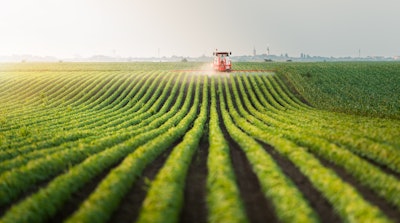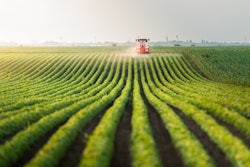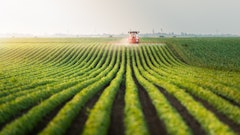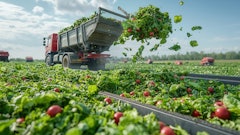
Leading food brands, suppliers and retailers have a powerful opportunity to drive environmental and social progress by optimizing supply chains for resilience, equity, and profitability. Ingredient-level, data-driven insights—spanning carbon emissions, water usage, and labor practices—are essential for smarter sourcing, manufacturing, and marketing of sustainability-focused products. A deeper understanding of supply chain risks not only boosts transparency and sustainability but also strengthens operational adaptability and supports more informed consumer choices.
Today’s global brands are faced with every-increasing supply chain challenges, spanning tariffs, climate regulations, and extreme weather events. To stay ahead, it is essential that brands remain agile and keep a steady roster of suppliers at hand.
Why ingredient sourcing is at risk
Climate change causes extreme weather events, altered agricultural productivity, and reduced food quality, which are beginning to impact food security. The impacts of climate change on the global food supply chain include food shortages, diminished livelihoods, and higher prices passed on to consumers. Global staple crop losses could reach 7-23% in a rapidly warming future. Every year, we lose 24 billion ton of soil to unsustainable farming and land use practices, putting 90% of the world’s topsoil at risk of vanishing by 2050.
Take, for example, coffee, a global industry in various markets, cultures, and geopolitical landscapes. The ongoing drought in coffee-producing nations like Brazil has caused record-high coffee prices, a trend that is likely to continue. Other critical ingredients such as cocoa, olive oil, rice, soybeans, and potatoes are expected to experience severely diminished yields and significantly higher prices in a warming climate.
These disruptions are not abstract future risks—they're already reshaping supply chains today. To navigate this new reality, CPG brands need more than broad commodity forecasts; they need precise, ingredient-level analysis to anticipate vulnerabilities and respond quickly. This level of insight is essential for avoiding costly disruptions, maintaining product integrity, and building long-term supply chain resilience. And, it brings benefits not only to a business’ bottom line, but to our planetary health as well.
Steps CPG brands can implement today
Taking a granular look at the hidden complexities of supply chains provides insight into potential social, environmental, and economic risks. However, it can also reveal innovative opportunities for sustainable sourcing.
To build resilient supply chains in the face of climate-related disruptions, companies must move beyond traditional spend-based carbon accounting methods. These top-down approaches, which rely on financial data, lack the specificity needed to identify and address environmental risks at the ingredient level.
A bottoms-up, ingredient-centric approach—using detailed data about what’s actually in your products—gives manufacturers the actionable insights they need. By focusing on individual ingredients and their sourcing practices, companies can pinpoint emissions hotspots, assess vulnerabilities, and make targeted improvements that enhance both sustainability and resilience.
While this granular Scope 3 data can be gathered through supplier outreach, increasingly companies are looking to automated carbon accounting platforms to provide a faster, scalable alternative. These tools use ingredient names and purchase volumes to generate accurate carbon footprints without the burden of direct supplier engagement, modeling impact based on likely sourcing scenarios and growing practices. It can be then supplemented with supplier outreach for ingredients with the most carbon-intensive footprints or highest variability in emissions.
Ultimately, combining verified, granular data with automated tools empowers companies to adapt quickly, reduce emissions, and future-proof their operations in an increasingly climate-volatile world.
Conclusion
As climate change and extreme weather continue to disrupt global agriculture, CPG brands must be prepared to pivot—adapting ingredients, suppliers, and sourcing regions to maintain product quality and availability. This level of agility requires more than general insights—it demands precise, ingredient-level data.
By leveraging third-party databases and advanced supply chain technologies, brands can gain detailed visibility into where and how their ingredients are produced, including sourcing origins, farming practices, certifications, and environmental footprints. With this intelligence, CPG companies can proactively identify climate-related risks and evaluate more sustainable, resilient alternatives.
Given their scale and purchasing power, CPG brands are uniquely positioned to drive meaningful change. Strategic use of granular data enables them not only to safeguard supply chain continuity, but also to influence upstream agricultural practices and foster more regenerative systems.
By mapping ingredients across key risk dimensions, companies can future-proof sourcing strategies, support climate-resilient farming, and ensure a stable, responsible supply of materials in a rapidly changing world.















